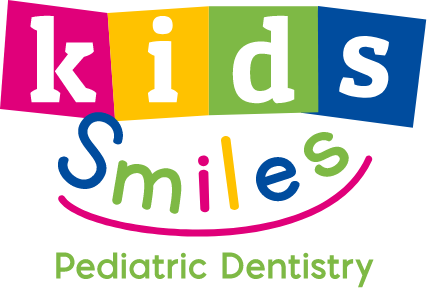February is National Children’s Dental Health Month! This month is all about raising awareness around the importance of children’s oral hygiene. This year’s National Children’s Dental Health Month theme is: Sealants Make Sense.
Dr. Irene Hilton (D.D.S.), chair of the American Dental Association Council on Advocacy for Access and Prevention says, “Sealants on permanent molars reduce the risk of caries (cavities) by 80%!”
Kids Smiles is joining the ADA and supporting this year’s theme, so we can make more families aware of this cavity-preventing treatment!
Here’s everything you need to know about dental sealants for kids:
What are sealants for teeth?
Sealants on teeth, or dental sealants, are protective seals that cover the chewing surfaces of the molar teeth to keep out plaque and harmful acids, and prevent cavities from forming.
With sealants, a dental material is applied to the teeth, typically to fill the indents and pits in the molars, then hardened to create a barrier that prevents teeth from decaying. These pits or ridges in the chewing surfaces of the teeth are most susceptible to cavities, so dental sealants help to fill these spaces and prevent bacteria from reaching softer parts of the teeth.
Can you put dental sealants on primary (baby) teeth?
Yes! Dental sealants for kids are actually ideal! The earlier children can receive dental sealants, the sooner they’re protected from cavities. Sealing baby teeth is advantageous, as (according to the CDC) 1 in 5 children between the ages of 5 and 11 have at least one untreated cavity.
From ages 12 to 19, the risk declines slightly to 1 in 7 kids with untreated cavities. The greatest risk for cavities is present during the child and teen years, which is why dental sealants are most common in younger patients!
How are kids’ dental sealants applied?
The process is quick, painless, and simple! It only takes a few minutes to apply dental sealants for kids. Here’s how it works:
- The dentist cleans and dries your child’s tooth.
- We place a dental gel on the chewing surfaces of the teeth, to prepare them for the sealant.
- We let the gel sit, then rinse it off.
- We dry the tooth.
- We apply liquid plastic/resin material in the grooves of teeth.
- We use a special blue light to harden the resin.
- The resin forms a dental sealant!
How long do dental sealants last?
Dental sealants can last several years before they need to be reapplied! Studies have shown dental sealants to last up to 9 years after placement. It’s important to know that sealants can fall off, which would make your child’s teeth vulnerable to cavities.
Your child’s dentist will check on his or her sealants at each routine appointment to ensure that they’re still in place.
Should my child get dental sealants?
It’s a great idea for children between the ages of 6 and 14 to get dental sealants! Once the molars break through the gums, (usually around age 6), they can be protected with dental sealants.
Dental sealants serve as a safe, cost effective, durable solution to protect the teeth against cavities.
Does insurance cover dental sealants?
Dental sealants are considered a preventative treatment in dentistry, so they are often covered under your dental insurance plan! Your insurance may cover the entire cost or a portion of the cost; it all depends on your specific insurance plan.
Still have questions about dental sealants for kids?
We’re here to answer your questions, and we want you and your child to know your options! Please don’t hesitate to reach out to us at any time.
Dr. Sierra, Dr. Kwon, Dr. Patel and our team are here to help guide you and your child. We offer kinder, gentler dentistry for kids and teens. It is our goal that your child develops and maintains a positive association with dental care and we do everything we can to create a pleasant, supportive, and fun environment for our little patients.
Ready to schedule an appointment? Let’s get started. Visit us in Town ‘n’ Country, South Tampa, North Tampa, or Bradenton!


